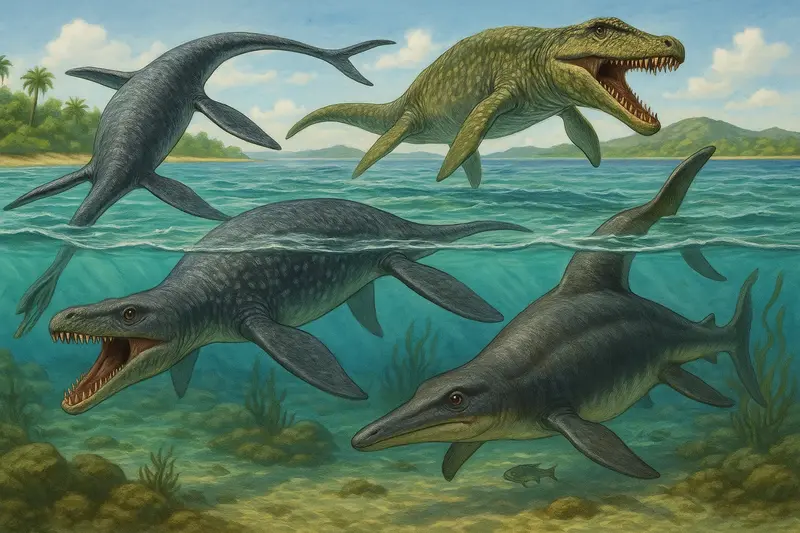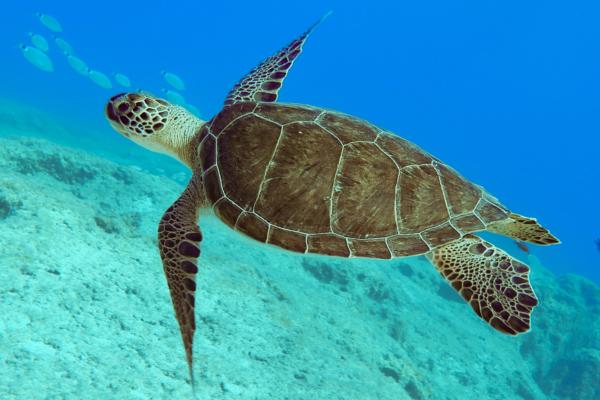Aquatic reptiles are ectothermic (cold-blooded) vertebrates with dry, scaly skin, adapted to life in marine or freshwater environments. They rely primarily on lung-based respiration and possess various morphological and physiological adaptations that enable them to thrive in aquatic ecosystems. This article explores their key traits, breathing strategies, major types, and both modern and prehistoric examples.

Aquatic reptiles evolved from terrestrial ancestors but have readapted to life in the water. Today, there are about 100 extant species, including 7 sea turtle species and around 80 species of sea snakes.
Key characteristics include:
Ectothermy: Their body temperature depends on external conditions, restricting them to warm tropical and subtropical seas;
Dry, scaly skin: Helps prevent dehydration in saline environments;
Salt glands: Allow the excretion of excess salt, maintaining internal water balance;
Nasal valves: Specialized tissue covers the nostrils during dives;
Large, inflatable lungs: Provide extended underwater air storage;
Morphological adaptations: Limbs transformed into flippers or tails flattened for propulsion.
Aquatic reptiles breathe air with lungs, unlike marine mammals that store oxygen in muscle myoglobin. Their diving strategies include:
Metabolic suppression: Reduces oxygen demand;
Anaerobic respiration: Temporarily generates energy without oxygen;
Cutaneous and buccal respiration: Some turtles and sea snakes can absorb oxygen via skin or mouth cavities;
Extended lungs: Sea snakes have elongated lungs running along the body, allowing for oxygen storage.
Examples:
Acrochordus and Cerberus snakes can dive for ~30 minutes;
Green sea turtles can dive for up to 50 minutes;
Sea snakes utilize long lungs to remain submerged longer.

Sea Turtles (Order Testudines)
Streamlined bodies, limbs evolved into flippers;
Found in all oceans (except polar regions);
Diets range from seagrass to jellyfish;
Dermochelys coriacea (leatherback turtle) can reach 2.2 meters and weigh up to 700 kg.
Sea Snakes (Subfamily Hydrophiinae)
Paddle-like tails, 62 venomous species;
Specialize in marine life and feed on small fish and aquarium/52-marine-animals.html">marine animals.
Marine Iguana (Amblyrhynchus cristatus)
Endemic to the Galápagos Islands;
Only known fully marine lizard;
Feeds on underwater macroalgae.
Saltwater Crocodiles (Crocodylus porosus)
Largest living reptile;
Can tolerate brackish and saltwater;
Carnivorous predators, but rarely venture far into open seas.
Modern species:
Sea Turtles: Caretta caretta, Chelonia mydas, Eretmochelys imbricata
Sea Snakes: Hydrophis platurus, Hydrophis belcheri, Laticauda colubrina
Marine Iguana: Amblyrhynchus cristatus
Saltwater Crocodiles: Crocodylus porosus, C. palustris, C. acutus
Prehistoric examples:
Ichthyosaurs: Triassic marine reptiles with fish/dolphin-like shapes; up to 26 m long; cone-shaped teeth and large eyes;
Placodonts: Triassic reptiles with plate-like teeth for crushing mollusks; lived in shallow seas;
Plesiosaurs: Jurassic reptiles with four flippers and varied neck lengths; agile hunters or stealthy fish-eaters;
Thalattosuchians: Jurassic marine crocodyliforms with fins and smooth skin;
Mosasaurs: Late Cretaceous marine lizards resembling streamlined monitor lizards; highly specialized and gave live birth.
animal tags: Aquatic Reptiles
We created this article in conjunction with AI technology, then made sure it was fact-checked and edited by a Animals Top editor.